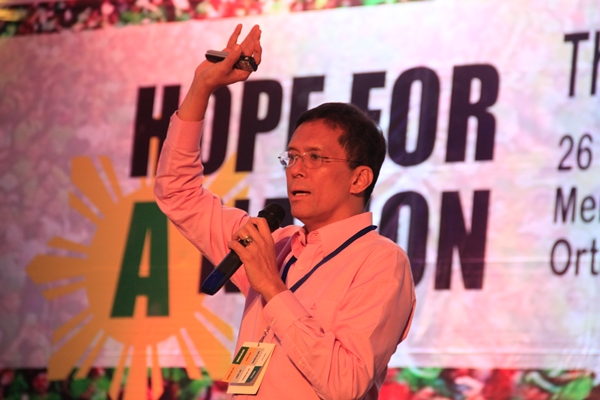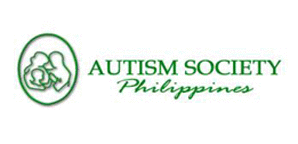The National Autism Conference tackles what is fact and fiction when it comes to stem cell therapy and autism.
Over the past few months, stem cell therapy has taken hold of the imaginations of many Filipinos looking for a cure to a myriad number of conditions, autism among them.
All across different forms of media, the average Filipino encounters testimonials from celebrities and lay people alike who swear by the effectiveness of stem cell therapy in providing relief from disease.
However, the University of the Philippines’ Dr. Antonio Dans cautions against pinning all of one’s hopes on a treatment that has only recently been introduced here in the country, especially with regards to its effectivity in curing autism.
Dans outlined his reservations, reasons, and suggestions for the future of stem cell therapy and autism here in the Philippines at the recently held Philippine National Autism Conference, which aims to provide information on developments relevant to medical professionals and community workers who work with autism.
Dans was only one of the many speakers who participated in the event, some of whom were Department of Justice Secretary Leila de Lima, ASEAN Autism Network chairman Malai Haji Abdullah Bin Malai Haji Othman, Cavite governor Jonvic Remulla, and broadcast journalist Karen Davila.
 |
| Dr. Antonio Dans of the Philippine Society of General Internal Medicine and the University of the Philippines’ Departments of Clinical Epidemiology and Internal Medicine says stem cell therapy in the country should be regulated. |
No Clinical Trials
Dans began his talk by explaining what exactly stem cell therapy is. According to him, stem cell therapy is a form of treatment wherein doctors use stem cells — premature cells within the body that grow to become specialized cells — for a multitude of applications.
“First, ‘yung regenerative medicine. ‘Yung meron sa katawan natin na matanda na, puwedeng palitan ng young cells. The second application is treatment. If you have diseased cells in your heart, they can be replaced by these cultured cells in the laboratory,” he explains.
Internationally, however, there are very few countries that actively endorse stem cell therapy at a clinical level. Stem cell therapy is practiced in China on a clinical level, but Western regulatory agencies caution against it because of the lack of regulation in China. Studies on stem cell treatment in South Korea that claimed to generate cells tailored to match patients were eventually discredited by an academic panel from the Seoul National University.
This is definitely not the case in the Philippines where personalities such as former President Joseph Estrada and former Senate President Juan Ponce Enrile endorse the treatment. Dans cautioned against listening to these testimonials, as they do not carry with them the rigorousness of a clinical trial. Clinical trials are sets of tests in medical research that determine the safety and efficacy of medical treatments.
“These are just case reports. One case, one success, a success rate of 100 percent. The highest study that we can use is a clinical trial and now the success rate is zero percent,” he says. “This is why the kind of study that we present is very important. Which one do you think is the most effective in convincing people to use a treatment, in a marketing sense? The case report is the most convincing. But the most important scientifically is the clinical trial.”
When it comes to clinical trials involving stem cell therapy and autism, Dans says that according to the website Stem Cells Australia, there are only clinical trials ongoing, neither of which are in the Philippines. The first one “Autologous Cord Blood Stem Cells for Autism,” is being held in the United States, while the second one, “Autologous Bone Marrow Stem Cells for Children With Autism Spectrum Disorders,” is being done in Mexico.
Questionable Motives
Dans also explained that there are three reasons that could exempt stem cell therapy from clinical trials, namely: the treatment is miraculous, it is an innovative treatment, and if it is compassionate for the patient to receive the treatment so his suffering can be eased.
A miraculous cure, says Dans, is something akin to Lorenzo’s oil, discovered by Augusto and Michaela Odone to help their son suffering from adrenoleukodystropohy.
“Scientifically, there are three components to a miracle. Number one, the course of the disease is uniformly poor. With adrenoleukodystropohy, you become bedridden and die. The child in Lorenzo’s Oil is the first patient to live until he was 30 years old. He was diagnosed at five and the doctors said he would die in two years. That was a big improvement,” he explains. “Everyone else who was genetically predisposed to the disease and were given the oil after birth totally avoided manifestations of the disease. There is also no other explanation for the improvement. He did not receive anything else. We need to ask ourselves if stem cell therapy fits those criteria. As far as I know, it has not.”
Even if stem cell therapy could be considered an innovative and compassionate treatment, Dans says that medical papers insist that these treatments eventually be subjected to clinical trials and regulation.
“There should be an oversight to make sure that the patient’s rights are not violated. The problem is that many who offer stem cell therapy refuse to subject themselves to regulation,” he says. “Besides regulation, we need to do the trials. We are the number one user, but there are no trials being done here. My third suggestion is publication. If it’s not published, it never happened.”
The intent, says Dans, is not to deprive people of the potential benefits of stem cell therapy, but to ensure that none of the patients, especially those desperate for a cure, end up being exploited by those who prey on their desire to alleviate their loved ones suffering.
“Stem cell therapy is a very expensive treatment, and there could be exploitation happening. If you refuse to be regulated, if you refuse to do research and there are no publications, but you charge millions of pesos, then your motives are questionable in offering stem cell therapy,” he warns.
This article appeared on 18 November 2013 in the print and on-line versions of Manila Bulletin's "Angels Talk" under the by-line of Ronald Lim.



 Posted in:
Posted in: 

0 comments:
Post a Comment